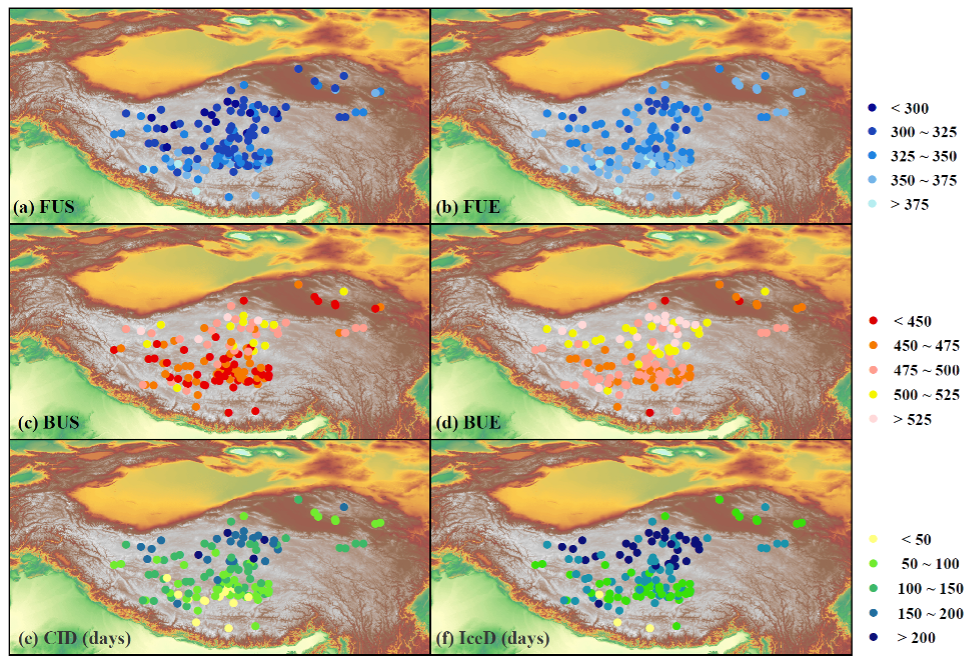Lakes on Roof of World Freeze Later and Melt Earlier under Changing Climate
The lakes on the roof of the world show a trend of later freezing-up, earlier breaking-up and thus shorten ice-covered duration since late 1970s, researchers report in the 2nd December Nature Scientific Data. The findings explicitly reflect the changes in thermodynamics of lakes under a warmer climate and implicate substantial associated alteration in biogeochemical processes in the region.
The findings are based on the lake ice phenology dataset reconstructed from remote sensing and modelling for 132 lakes over the Tibetan Plateau. The dataset is recently released by the Water Environment Remote Sensing team with the International Research Center of Big Data for Sustainable Development Goals (CBAS) and the Aerospace Information Research Institute (AIR), Chinese Academy of Sciences (CAS). The dataset is available at the National Tibetan Plateau Third Pole Environment Data Center and the Figshare.
Based on the reconstructed lake ice phenology dataset, the research team also reported that for lakes from south to north Tibetan Plateau, the completely ice-covered duration (CID) ranges from 15 to 215. The latitude gradients of CID are 17.5 days/degree. For lakes locating between 4500 to 5000m the altitude gradient of CID and is estimated to be 18.9 days/hm.
Ice phenology (i.e., the timing of ice-on and ice-off) records are rarely available for lakes over the Tibetan Plateau due to the challenges and cost of ground-based observations. The research team innovatively developed a framework by combining the strengths of satellite-based observation and numerical modelling in reconstructing complete, consistent, and continuous time series for 132 lakes across the Tibetan Plateau for the period 1978 to 2016.
The dataset produced is unique and valuable in understanding the response of the lake thermodynamics to climate change and the subsequent hydrological and ecological impacts. The framework is iteratively improved and is expected to monitor the dynamics of lake ice phenology across the Tibetan Plateau and provide fundamental information for environmental research and decision-making in the region.

Spatial distribution of lake ice phenology over the Tibetan Plateau. (Image by AIR)



News & Events